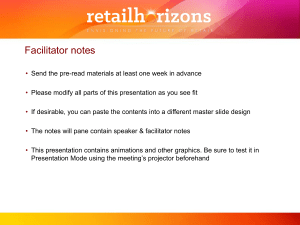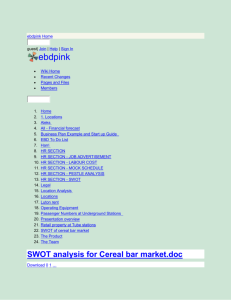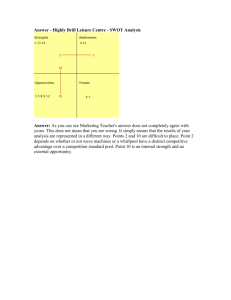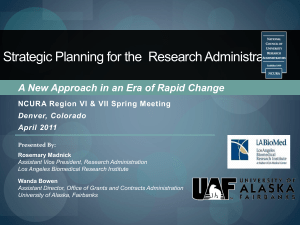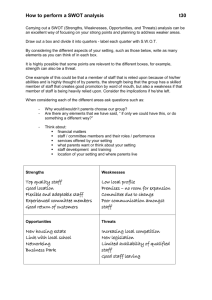Workshop 2 - Facilitators agenda - Retail Industry Leaders Association
advertisement
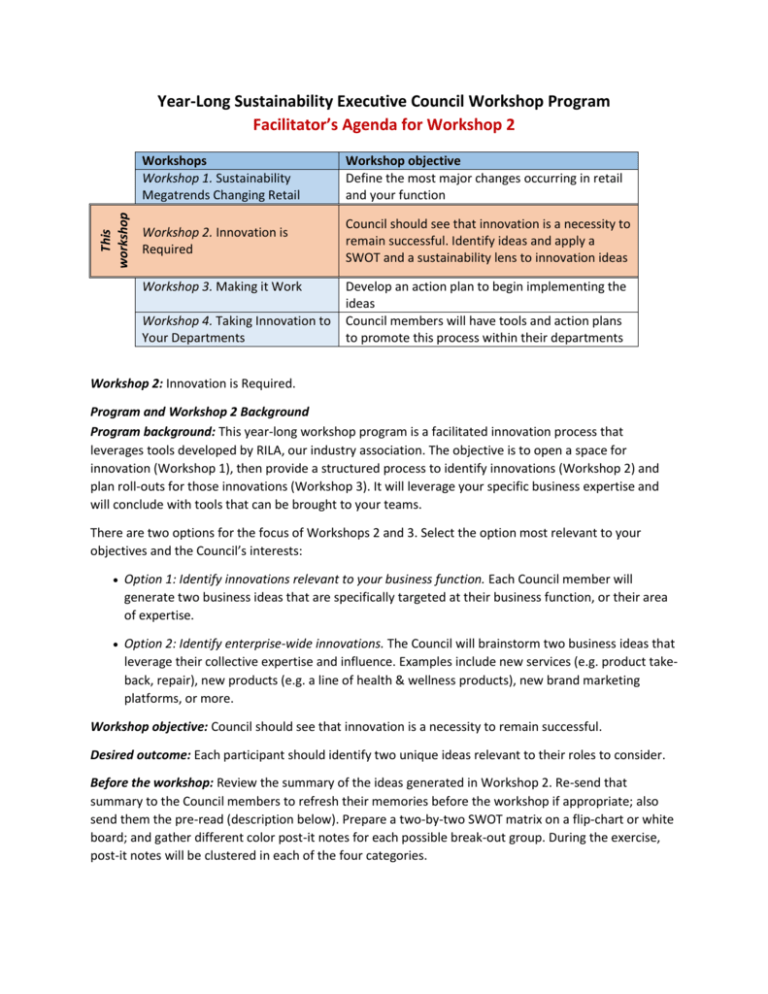
This workshop Year-Long Sustainability Executive Council Workshop Program Facilitator’s Agenda for Workshop 2 Workshops Workshop 1. Sustainability Megatrends Changing Retail Workshop objective Define the most major changes occurring in retail and your function Workshop 2. Innovation is Required Council should see that innovation is a necessity to remain successful. Identify ideas and apply a SWOT and a sustainability lens to innovation ideas Workshop 3. Making it Work Workshop 4. Taking Innovation to Your Departments Develop an action plan to begin implementing the ideas Council members will have tools and action plans to promote this process within their departments Workshop 2: Innovation is Required. Program and Workshop 2 Background Program background: This year-long workshop program is a facilitated innovation process that leverages tools developed by RILA, our industry association. The objective is to open a space for innovation (Workshop 1), then provide a structured process to identify innovations (Workshop 2) and plan roll-outs for those innovations (Workshop 3). It will leverage your specific business expertise and will conclude with tools that can be brought to your teams. There are two options for the focus of Workshops 2 and 3. Select the option most relevant to your objectives and the Council’s interests: Option 1: Identify innovations relevant to your business function. Each Council member will generate two business ideas that are specifically targeted at their business function, or their area of expertise. Option 2: Identify enterprise-wide innovations. The Council will brainstorm two business ideas that leverage their collective expertise and influence. Examples include new services (e.g. product takeback, repair), new products (e.g. a line of health & wellness products), new brand marketing platforms, or more. Workshop objective: Council should see that innovation is a necessity to remain successful. Desired outcome: Each participant should identify two unique ideas relevant to their roles to consider. Before the workshop: Review the summary of the ideas generated in Workshop 2. Re-send that summary to the Council members to refresh their memories before the workshop if appropriate; also send them the pre-read (description below). Prepare a two-by-two SWOT matrix on a flip-chart or white board; and gather different color post-it notes for each possible break-out group. During the exercise, post-it notes will be clustered in each of the four categories. Pre-read: The four Retail Horizons scenarios. Scenarios can be used to challenge, inspire, and excite people to create more sustainable change. The scenarios are not intended to be predictions or visions of desired futures, but instead are coherent, plausible stories about possible futures. You will see them written as just that: stories. They are a powerful tool to help any company: better understand trends, risks, and opportunities; imagine different possible futures; imagine new strategies and develop innovations; and intuitively understand possible challenges and opportunities. After the workshop: briefly summarize the business ideas generated during the exercise, and who is responsible for each. Within a week, send this summary via email or other method and ask the Council members to discuss these ideas with 2-5 of their internal business partners; specifically addressing the questions: Are we—or our competitors—currently pursuing these ideas? Who has expertise relevant to these ideas? What other business ideas can address the trends we prioritized in Workshop 1? Workshop 2 agenda Council introductions 5 min Each Council member should briefly re-introduce themselves and mention the top five trends that they identified in Workshop 1. Program and workshop introduction 5 min Workshop facilitator will re-introduce the Council to the year-long program and then the objective for this second workshop. Exercise (adapted from the RH Toolkit’s “Assessing risks and opportunities through a SWOT analysis” exercise) 40 min 1. (5 min) Split into teams of two based on roles (products, stores, marketing, etc.); assign each team to a different scenario & ask each team to review their scenario. 2. (10 min) In teams, think about your current business, existing in the world described by that scenario, and undertake a SWOT analysis. Write each strength, weakness, opportunity or threat on different post-its, and post to the two-by-two SWOT matrix. 3. (10 min) As full Council, cluster common post-it notes together and name those clusters. 4. (10 min) Collectively agree on the top 5 clusters that the company should start addressing now. 5. (5 min) Individually, quickly relate your business function to the top 5 clusters and answer the question: what two business ideas, processes, or innovations should my team pursue to address the top 5 clusters? 6. Have each Council member report their ideas to the group. Facilitator should capture a summary of each of these ideas. Sustainability program updates 10 min Facilitator can use this time to provide a brief update or next steps on the company’s sustainability program. Adjourn “All good ideas are terrible. Until people realize they are obvious. If you're not willing to live through the terrible stage, you'll never get to the obvious part.” - Seth Godin
